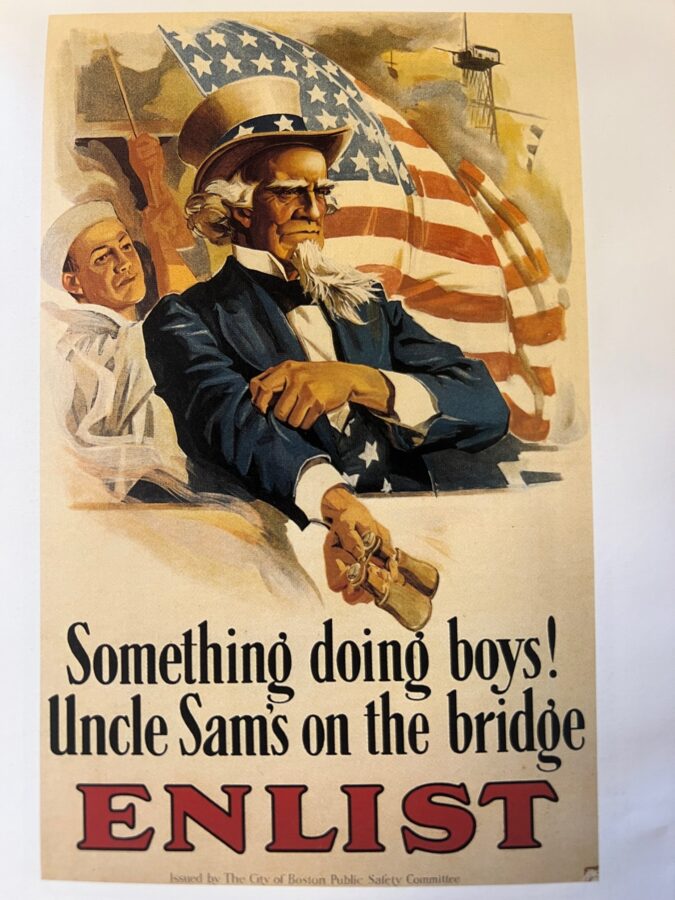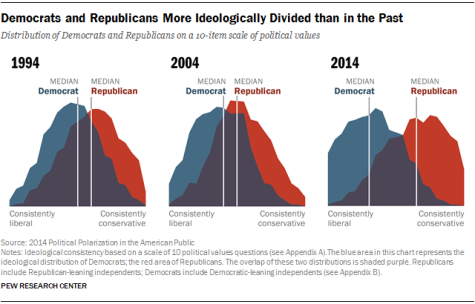The Use of Propaganda
This is propaganda that was used in the War to get people to enlist.
Propaganda is such a commonly used term globally, but many people are unaware of the depth of that word. Propaganda is a way of promoting communication with a certain agenda. It is meant to influence one’s behavior along with their opinions. Propaganda can rely heavily on misinformation in order to influence people’s views. There are various techniques of propaganda, and it is something that affects the global population.
In the past few years, there has been a rise in the use of social media, which has also increased the use of propaganda. It has altered the way people can access information, and how they spread information. In the early 2000s, social media platforms such as Facebook, MySpace, and Friendster, became international networks for people to communicate with each other and voice their opinions. After 2012, platforms such as Instagram, Twitter, and most recently TikTok, have taken the world by storm and continue to be the ways people spread knowledge. Many people make use of these platforms by promoting their political views or religious beliefs. For most young people, social media is their way of gaining access to information and staying updated on situations. It is what many turn to for their first source of news. Former Journalist and current Public Relations Coordinator at Pennridge, Dave Thomas, discussed how he avoids propaganda, explaining, “I package all the information for the people to decide; it’s not my job to tell them how to feel.” Thomas went on to explain how it is important especially when working for a school, to avoid bias. He discussed how the district itself is neutral and stated “Whether it a media outlet or a member of our community, we prepare information and post it on our websites and social media channel and then encourage everyone to stay informed by reading that information, watching the videos we provide on our YouTube channel and making their own decisions. We have the awesome opportunity to highlight what the students and staff are doing every day in our Pennridge schools and that’s our focus. We also encourage our students, staff, and entire community to be an active voice in all Pennridge School District decisions. At the same time, we ask them to be respectful and courteous during the meetings, but utilize the public comment section of the meeting to have their voices heard by anyone present at the meetings.”
There are numerous techniques of propaganda, so it is important for society to be able to recognize them. A popular technique used is appealing to one’s emotions. Many advertisements may try to have certain music, and dialogues that make the viewer feel strongly connected to the subject, prompting them to buy the product or donate to a cause. However, the viewer may not know what the product they’re buying entails or if the cause they may be donating to is real. Another popular tactic is name-calling. Name-calling is the idea of using a derogatory term to describe your opponent. This is most commonly used in political debates. Many of these terms can influence citizens to feel a certain way about the candidate, even if those terms are false. Lastly, another popular technique is celebrity endorsement. This is when a celebrity endorses a certain brand or product, which will make a person want to buy something from the brand, or product. This is an example of how companies try to associate positive feelings with a product. Charles Lainhart, the Advanced Placement (AP) Language and Composition teacher at Pennridge High School elaborated about the advertisements stating, “A lot of it is emotion; a lot of ads now are just little mini art films. They try and get you to have a feeling about a product or brand.”
Propaganda is used internationally, and it is a common form of marketing that you may see when you visit other countries as well. It is also more common in some countries than others. In Singapore, about 75 percent of the population believe that social media is a positive influence on democracy in their society. However, in countries such as France or the Netherlands, only 40 percent share that same opinion. In the United States, only 33 percent shared that opinion, and many people in these countries believe that social media allows them to have a say in their political changes. It is also a great way to voice their thoughts. It is also widely used in government to promote certain views and agendas. Lainhart discussed this stating, “There’s a lot of them trying to present an image of being nice, fun, and happy.”
Propaganda as a whole has a large impact on society. With the increase of social media, you see that it has a bigger place in the world. It is something people see daily whether it’s online, or in person. It is a way for people to advocate for their ideas and beliefs and also persuade others. Propaganda can be both harmful and helpful for society.
Sources:
“Dealing with Propaganda, Misinformation and Fake News – Democratic Schools for All – Www.coe.int.” Democratic Schools for All, https://www.coe.int/en/web/campaign-free-to-speak-safe-to-learn/dealing-with-propaganda-misinformation-and-fake-news.
“11 Types of Propaganda Techniques in Advertising (with Examples).” MotionCue, 7 Sept. 2022, https://motioncue.com/types-of-propaganda-techniques-in-advertising/.
Ortiz-Ospina, Esteban, and Max Roser. “The Rise of Social Media.” Our World in Data, 20 Mar. 2023, https://ourworldindata.org/rise-of-social-media.
Greenwood, Shannon. “2. Views of Social Media and Its Impacts on Society.” Pew Research Center’s Global Attitudes Project, Pew Research Center, 25 Apr. 2023, https://www.pewresearch.org/global/2022/12/06/views-of-social-media-and-its-impacts-on-society-in-advanced-economies-2022/.
DMI, Simon @. “Social Media: What Countries Use It Most & What Are They Using?” Digital Marketing Institute, Digital Marketing Institute, 1 Sept. 2022, https://digitalmarketinginstitute.com/blog/social-media-what-countries-use-it-most-and-what-are-they-using.
“Social Media’s Growing Impact on Our Lives.” American Psychological Association, American Psychological Association, https://www.apa.org/members/content/social-media-research.
Avani Kallur, Grade 12. Interests/hobbies include Mini-Thon, buildOn, tennis, NHS, Key Club, traveling, and spending time with friends and family. Avani...






